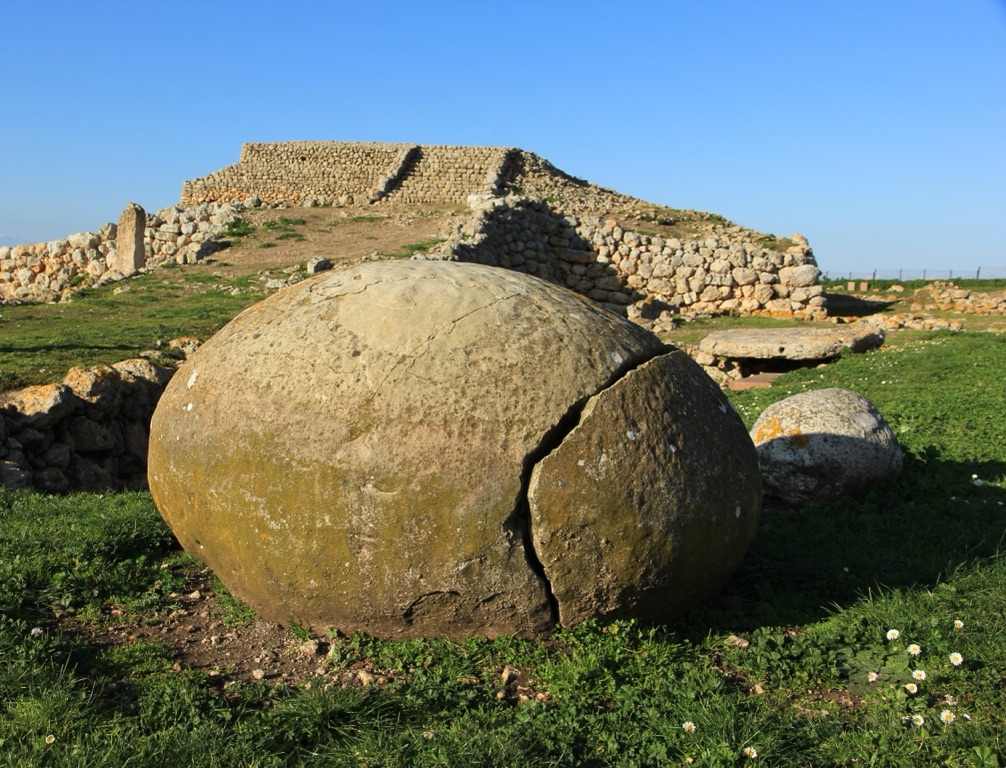Summary
Introduction to Monte d’Accoddi
Monte d’Accoddi is a captivating prehistoric site located in Sardinia, Italy. It showcases the advanced Neolithic and Copper Age cultures that flourished in the region. The site is notably home to a massive stone platform, resembling a stepped pyramid. This unique feature reflects the early sacred architecture usually found in Mesopotamia. Researchers believe Monte d’Accoddi had a ceremonial role, attracting visitors far and wide. Its exact function, however, remains shrouded in mystery. The plateau’s design and the artifacts found there indicate a complex society with significant ritualistic practices.
Get your dose of History via Email
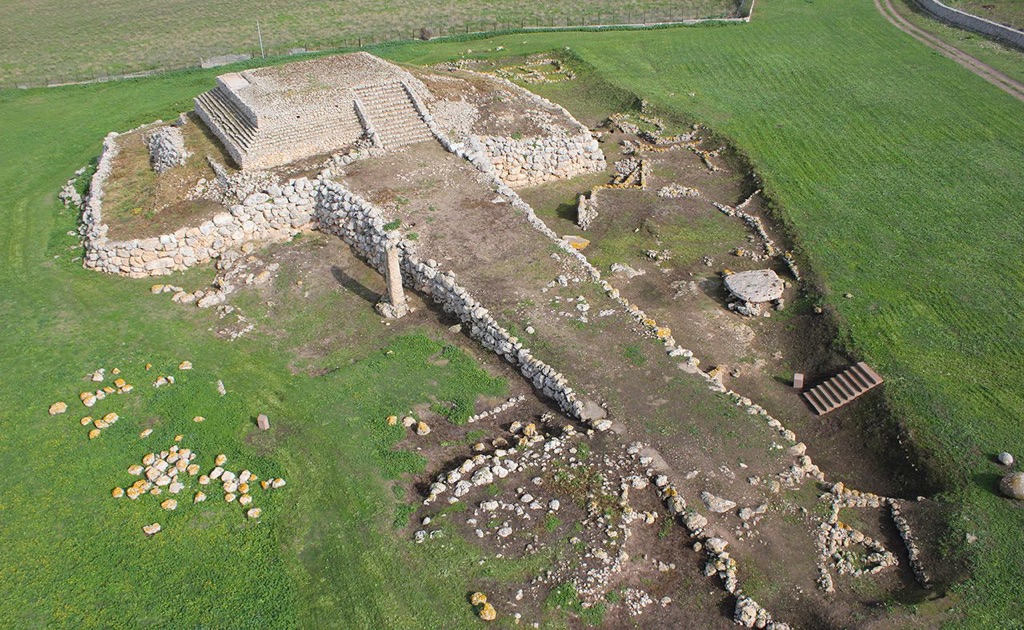
Architectural and Cultural Significance
The structure of Monte d’Accoddi sets it apart from contemporary megalithic constructions in Europe. The meticulous arrangement of stones and the presence of an altar suggest it was a vital religious center. It symbolizes the dawn of architectural development and societal complexity in Europe. Exploring the site offers a glimpse into the prehistoric society’s worldview, spirituality, and artistic endeavors. Observations of this remarkable monument lend insight into the synchronized social and ritualistic activities that took place thousands of years ago.
Preservation and Study of Monte d’Accoddi
Preserving Monte d’Accoddi is crucial for understanding prehistoric European communities. It provides valuable data to archaeologists and historians studying civilizational development. Despite the challenges posed by erosion and human activity, efforts to restore and protect the site are ongoing. Through these endeavors, Monte d’Accoddi continues to serve as a nexus of cultural heritage and historical inquiry. It invites visitors to delve into the enigmatic past of human civilization and ponder the lifestyles of our ancient ancestors.
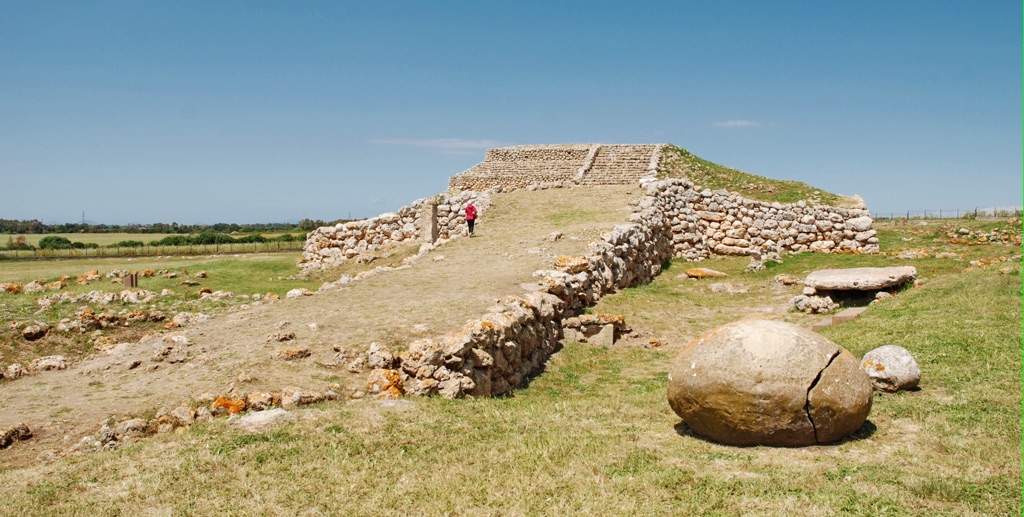
Historical Background of Monte d’Accoddi
Unearthing an Ancient Site
Monte d’Accoddi stands as an enigmatic testimony to the rich Neolithic and Copper Age history of Sardinia. Discovered in the 1950s, this site reveals an era when early societies were forging their identities. It consists of a monumental megalithic platform, often likened to a ziggurat – an ancient step pyramid. Researchers have gleaned that these ruins are not mere remnants but a window into the sophisticated culture that once thrived there.
Decoding the Step Pyramid’s Purpose
The central feature of Monte d’Accoddi, its step pyramid, continues to intrigue researchers and visitors alike. Initially believed to be a temple, its role remains under study. However, the presence of sacrificial altars and religious artifacts implies it might have been a place of worship or a social gathering ground. Such a hypothesis aligns with the discovery of animal bones and sea shells, suggesting diverse ritualistic activities.
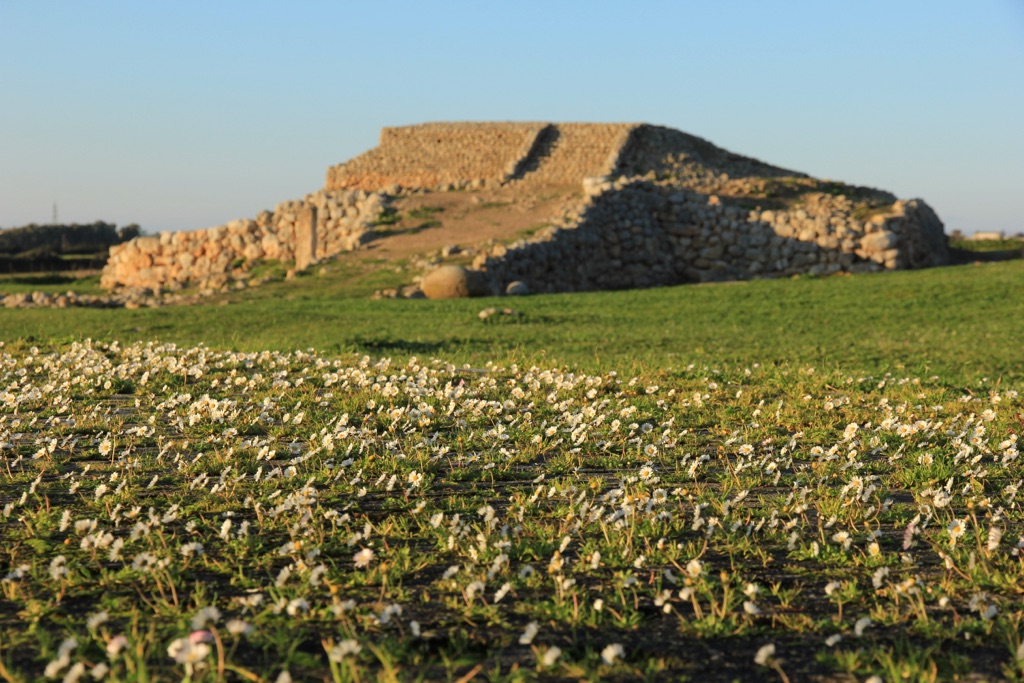
The Influence of External Cultures
Interestingly, the architectural style of Monte d’Accoddi points to possible influences from distant civilizations. Similarities to Mesopotamian ziggurats suggest that the society had contact with, or at least knew of, far-off cultures. This cultural cross-pollination could have helped shape the unique structure we see today. The exchange of ideas might also have contributed to the community’s social and religious evolution.
The layered complexity of Monte d’Accoddi’s function signifies a society rich in tradition and spirituality. Its position, overshadowing the surrounding plains, marks it as a significant landmark. Such a characteristic likely afforded it prominence in the prehistoric landscape. Moreover, the diverse finds from the site, including tools and ornaments, hint at the daily life and craftsmanship of the prehistoric inhabitants.
Today, Monte d’Accoddi captivates historians and tourists, standing as a silent guardian of time. Efforts to preserve the site ensure that it continues to inspire and educate. Its structure not only provides clues to the prehistoric Mindset but also embodies the timeless human quest for connection with the divine. This monument is a profound legacy of early European civilization, resonating through the ages.
The Discovery of Monte d’Accoddi
Initial Uncovering
Amidst the serene landscapes of Sardinia, a remarkable discovery took shape in the 1950s. It was then that archaeologist Ercole Contu unearthed the first signs of Monte d’Accoddi. His team stumbled upon the site while surveying land near Sassari, an area already known for its rich history. They quickly identified the remnants of an ancient civilization, piecing together the impressive structure that remained hidden for ages.
Recognition of the Site’s Significance
Contu’s pioneering work at Monte d’Accoddi gained immediate recognition. It revealed a complex stepped altar that stood out against Europe’s prehistoric landscape. The discovery prompted a much deeper exploration. Other experts joined Contu to excavate and secure the site’s formidable heritage. They recognized that they had found a monument unparalleled in the region.
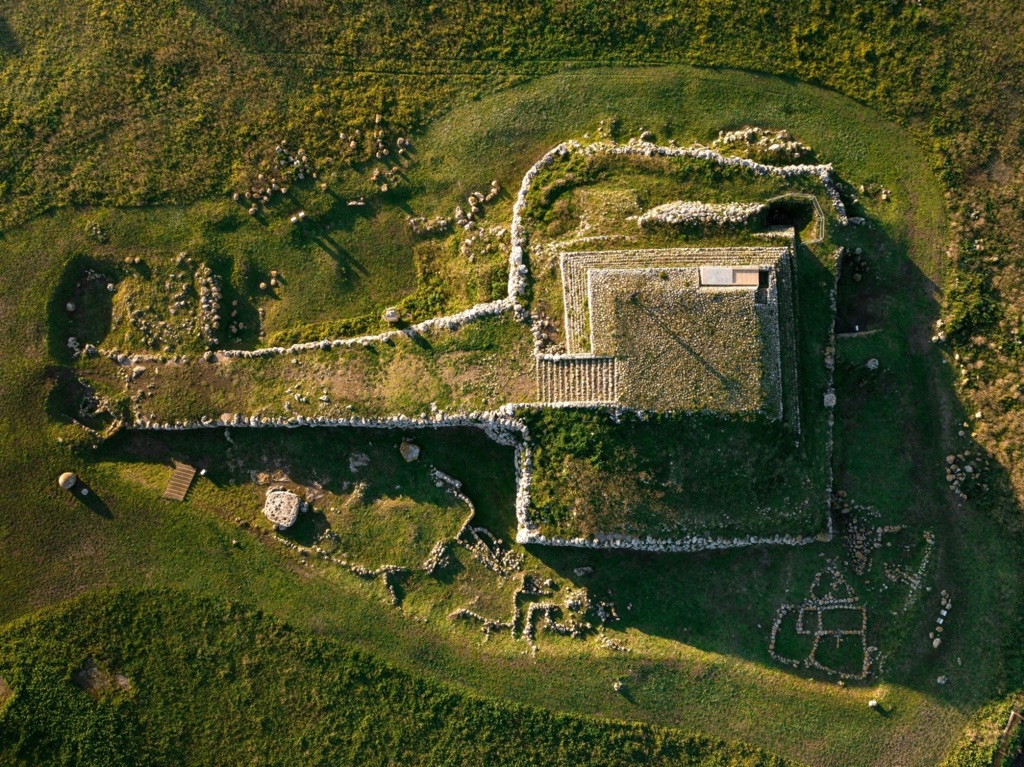
The Expansive Excavations of Monte d’Accoddi
Following the initial discovery, extensive excavations took place over the subsequent decades. Teams worked meticulously to unearth the layers of history buried beneath the Monte d’Accoddi. They uncovered a range of artifacts and structures that shed light on the site’s past. Their efforts painted a vivid picture of prehistoric life and rituals that once centered around the monument.
The gravity of Monte d’Accoddi’s discovery grew with each artifact uncovered. The variety and scope of these finds played a key role in understanding the site’s historical context. From pottery shards to fragments of tools, each piece added depth to the story of Monte d’Accoddi. It became a beacon of Sardinia’s prehistoric culture and a source of immense pride.
Today, the site of Monte d’Accoddi stands as a testament to a bygone era. It’s an essential part of Sardinia’s cultural heritage. The discovery’s impact extends far beyond academia. Monte d’Accoddi now draws visitors from around the globe, eager to connect with the ancient past it reveals. Contu’s remarkable find continues to inspire and educate on the complexities of human history.
Cultural Significance, Dating Methods, Theories and Interpretations
Unlocking the Age of Monte d’Accoddi
Dating Monte d’Accoddi has been a cornerstone of its study. Archaeologists have employed methods like radiocarbon dating to establish timelines. These scientific techniques indicate that the site dates back to around 4000 BC. Such findings affirm the significance of the site as one of the earliest known sacred structures in the Mediterranean. These methods not only provide a chronological framework but also validate the remarkable antiquity of this prehistoric site.
Monte d’Accoddi’s Role in Ancient Society
The cultural importance of Monte d’Accoddi is undisputed. As possibly a religious temple or an altar, it played a central role in the community. The size and structure hint at its significance as a communal meeting place. It possibly hosted rituals and ceremonies of great importance to its builders. The cultural practices shaped by Monte d’Accoddi echo through Sardinia’s cultural memory, marking it as a site of communal and religious activity in prehistoric times.
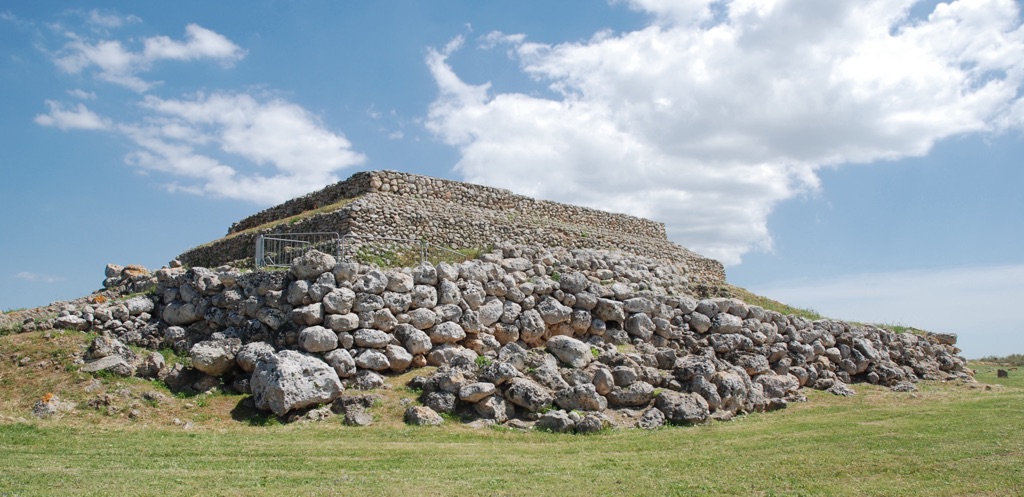
Theories Surrounding Its Use
A myriad of theories exists regarding the purpose of Monte d’Accoddi. Some suggest it was a site for astronomical observations, aligning with celestial events. Others believe it to be a burial site, given the human remains found nearby. The true purpose of Monte d’Accoddi is still a subject of lively debate among scholars, adding to the fascination and mystery surrounding the site.
Interpretations of the site are informed by the findings of various excavations. These include the discovery of artifacts like stone tools and ornaments. Such items provide a glimpse into the daily life of those who built and used the site. The sophistication of these objects suggests a society of considerable complexity and artistic capability, further contributing to the cultural narrative of Monte d’Accoddi.
The cultural significance of Monte d’Accoddi extends beyond its physical structure. It represents a link to a deeply spiritual and communal way of life. Also, it serves as a chronicle of human endeavor in an era shrouded in time. Monte d’Accoddi remains a touchstone for understanding the mysterious past of ancient Sardinia and the broader tapestry of human history in the Mediterranean basin.
Conclusion and Sources
The exploration of Monte d’Accoddi has enriched our understanding of prehistoric cultures in the Mediterranean. As a site of profound archaeological significance, it offers a unique glimpse into the rituals, social structures, and cosmological insights of Neolithic and Copper Age Sardinians. The theories and interpretations that have emerged from studies at Monte d’Accoddi stimulate ongoing scholarly dialogue, inviting future generations to unwind its mysteries further. This ancient site remains a beacon of cultural heritage, symbolizing the ingenuity and spirituality of the human legacy.
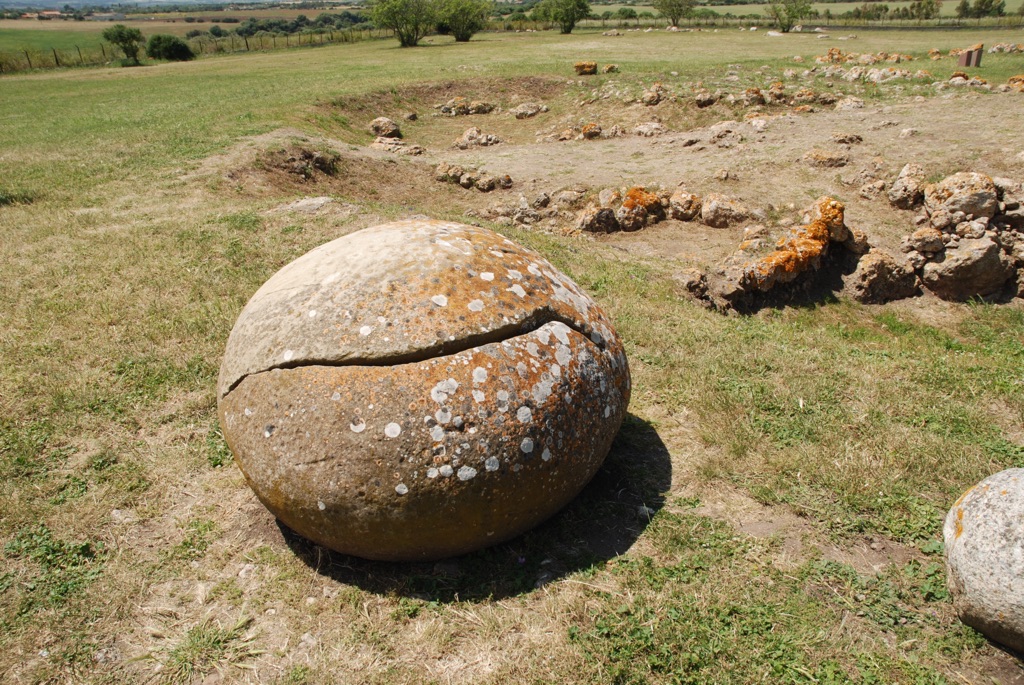
For further reading and to validate the information presented in this article, the following sources are recommended:
Or you can check any of these reputable archaeological and historical texts:
Tanda, G. (1985). The Monte d’Accoddi area in the context of recent excavations and research in Sardinia. In J. D. Evans, B. Cunliffe, & C. Renfrew (Eds.), Antiquity and Man: Essays in Honour of Glyn Daniel (pp. 111-122). London: Thames and Hudson.
Contu, E. (1960). Monte d’Accoddi (Sassari): Notizia preliminare degli scavi compiuti nella campagna 1954-1958. Bullettino di Paletnologia Italiana, 69, 7-65.
Perra, M. (1997). Monte d’Accoddi (Sassari): Problemi storici e nuove ricerche. Sardegna, Storia e Cultura, 2, 4-27.
Lilliu, G. (1982). La civiltà dei Sardi dal paleolitico all’età dei nuraghi. Torino: Nuova ERI.
Zedda, M. & Fadda, M. A. (2009). The landscape and the cultural value of Monte d’Accoddi: A study from Sardinia, Italy. In Landscape Research, 34(5), 517-530. DOI: 10.1080/01426390902893560.

